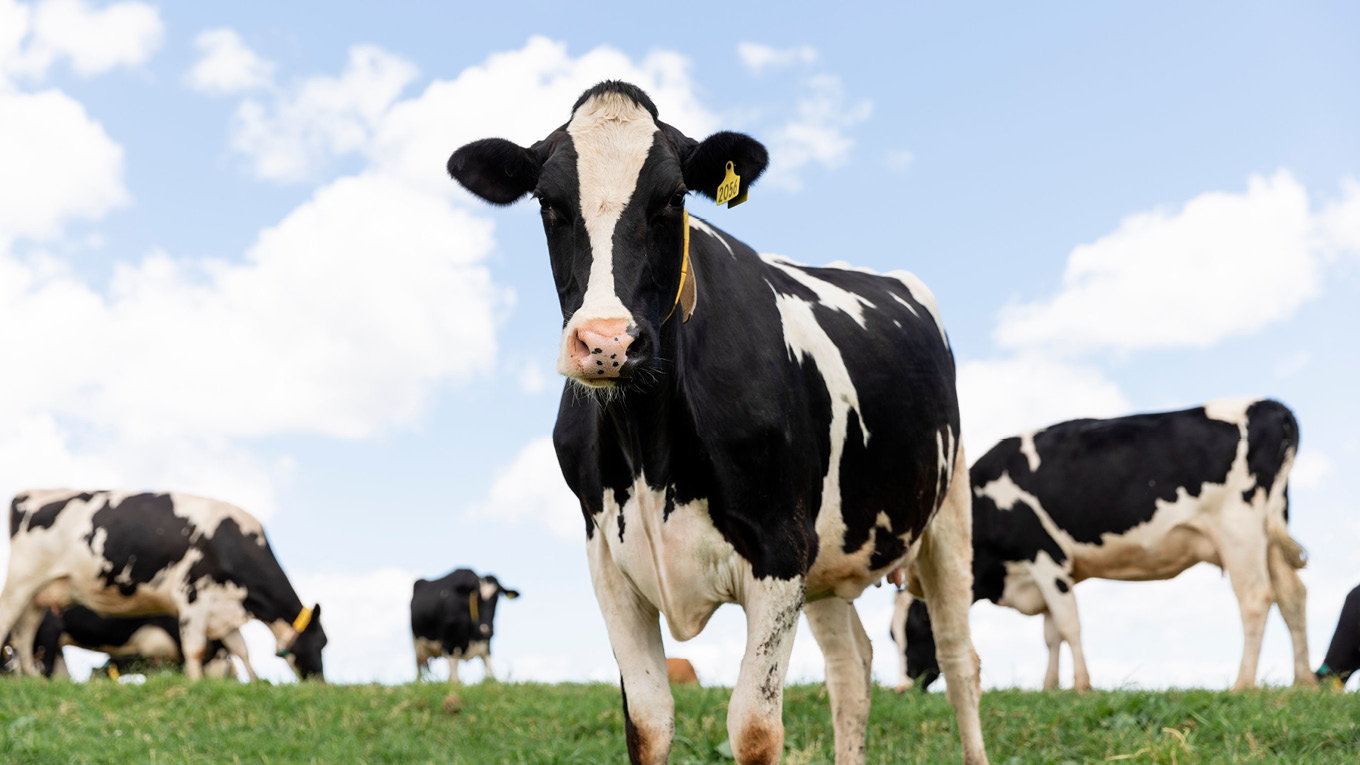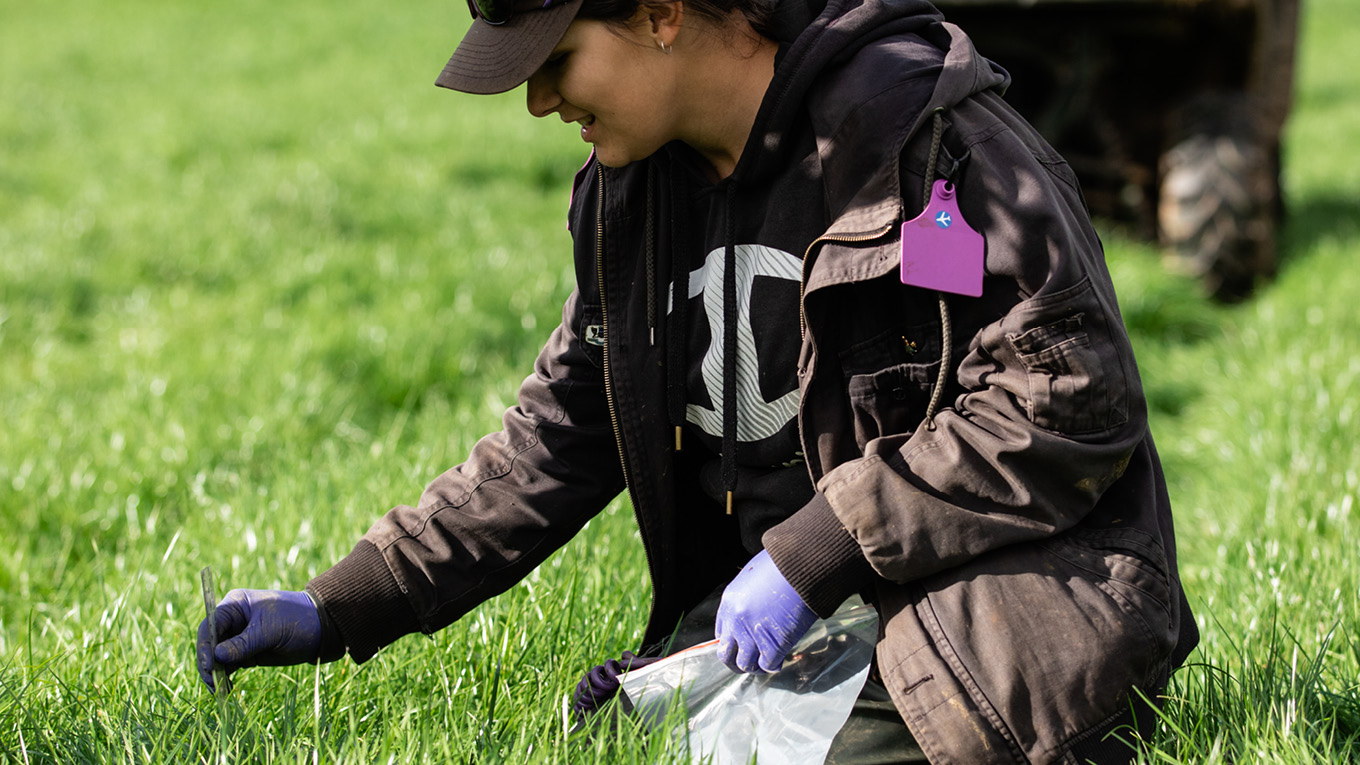Choosing the Right Crop
There are a number of forage crop options available to dairy farmers.
Brassicas
Brassicas are grown on about 70% of dryland dairy farms in southern Victoria and Tasmania.Making the most of them requires planning and good management to achieve a high conversion of crop into milk.
Bulb turnips
Turnips are a popular brassica crop because they grow well in summer and are very nutritious for dairy cows. Bulb turnips are used to help bridge a summer feed shortage.
Cultivars like Barkant, Rival and Marco turnips are bulb turnips. These are leafier and more upright than older varieties of turnip like Mammoth Purple Top or Green Globe, with two-thirds of the bulb above the ground.
The Turnips fact sheet summarises key findings of the 3030 Project investigation into different aspects of turnip management to increase home-grown feed production and utilisation and their role on pasture-based dryland farms. It focuses on the bulb turnip cultivars.
Regrowth brassicas
Regrowth brassicas are the forage crops of the brassica species that can regrow after most of the aerial part of the plant has been grazed. They include species such as forage rape (Brassica napus), kale (Brassica oleracea), hybrids such as pasja (Brassica campestris x Brassica napus) and leafy turnips. Regrowth brassicas are gaining popularity among dairy farmers in southern Australia, mainly as an alternative to bulb turnips during summer and more recently as an autumn forage option.
More information is available in the Regrowth brassicas fact sheet.
Chicory
Chicory is a nutritious summer herb with potential to provide good grazing for dairy herds in southern Australia. It has significant growth potential in late spring and summer, which can complement the seasonal production pattern of perennial ryegrass.
The dry matter (DM) percentage of chicory ranges from 10% to 15%, so yields can vary by up to 50% if DM is over or under estimated.
Steps to estimate yield
1. Make a 0.25 square metre quadrant by bending wire into a square 0.5m x 0.5m
2. Take cuttings from four randomly chosen sites, cut to five centimetres in height
3. Bulk up four samples and weigh
4. Multiply by 10,000 to get fresh weight (kilograms per hectare)
5. Take a 200-gram sample of fresh chicory
6. Dry in microwave or oven and re-weigh or send a sample away for DM analysis
7. Calculate DM% (dry weight/fresh weight)
8. Calculate DM/ha (fresh weight x DM%)
More information
The Chicory fact sheet includes practical aspects of chicory management and summarises findings from the 3030 Project on potential production, seasonality, grazing management, agronomic requirements and potential system fit.
Millet and Sorghum
Millet and sorghum are summer forage options for dairy farms due to their potential to rapidly accumulate DM in warm conditions. Both millet and sorghum tend to be more reliable than other annual summer crops like brassicas or chicory when soil moisture is limited.
The nutritional value of millet and sorghum tends to be less than other summer crops. Yields can be affected by low temperature in summer.
Both millet and sorghum experience minimal disease or pest threats compared to spring-sown brassicas. Millet and sorghum can also be used for double cropping after late-cut winter cereals.
Advantages
- More likely to attain a minimum amount of feed than most other broad-leaf summer crop options due to higher tolerance to water stress and low risk of insect attack
- Higher nitrogen use efficiency than most broadleaf summer forage crops
- Selective sprays can be used as many times as necessary to secure control of problematic broad-leaf weeds
Disadvantages
- Poor control of grass weeds
- Poor nutritive value of summer diet for lactating cows
- Can have moderate metabolisable energy (ME) but rapidly lose quality once past the ideal grazing height
- Often cannot be sown until late spring or early summer due to higher minimum soil temperatures required for germination, so miss out on growth potential under good growing conditions.
- Stock risk prussic acid poisoning if grazed at certain stages of growth for sorghum
- Cool summer conditions in southern Victoria can restrict crop growth
More information
The Millet and sorghum fact sheet summarises the key findings from a 3030 Project study and discusses the role of millet and sorghum in pasture-based dairy systems.
Winter cereals
Winter cereals can fill the early-autumn feed gap that exists in perennial ryegrass-based systems. They are able to produce more feed over winter than most perennial pastures.
Winter cereals can also combine with summer crops as part of a double crop rotation in a paddock renovation program. High potential for use of winter cereals was identified in low-rainfall regions with between 450 600 millimetres of rainfall a year, where perennial ryegrass is not as persistent. Winter cereals may also be grown effectively on run-off or lease blocks then harvested and used on the milking platform.
Strengths
Winter cereals can provide feed earlier than annual ryegrass (early autumn) because they are generally more adaptable to early sowing due to higher tolerance of dry conditions. Cereals are also better suited to single-cut silage making, whereas annual ryegrass requires multiple cuts or grazing to be fully utilised.
Weaknesses
The nutritive value of winter cereals is similar to ryegrass in the tillering stage but declines during the later stages of growth. Maximum yields of cereals can only be obtained by single-cut silage making, with or without being grazed once during the early stages.
However, the losses from harvest to feeding out cereal silage can considerably increase the cost per kilogram of feed consumed by the cows compared to fully grazed annual ryegrass, particularly for whole-crop silage cut at the late milk-soft dough stage.
More information
The Winter cereals for silage fact sheet outlines the advantages and disadvantages of winter cereals over annual ryegrass. Other topics include how winter cereals fit into the feed plan, sowing mixes and silage making tips.
Summer cropping
Below are some resources which provide an overview of what dairy farmers should consider for summer cropping:
In this video, soil scientist Christian Bannan talks about soil preparation for summer cropping.
Optimising maize silage through good harvest management
Dairy farmers can get the best from maize, in terms of quality and yield, by getting harvest and storage right. The Accelerating Change Project - Successful Summer Cropping page includes techniques for testing harvest quality and stack density.
Downloads
-
Growing turnips booklet 2011
PDF, 1.07 MB -
regrowth brassicas summer cropping options factsheet
PDF, 242.77 KB -
Chicory factsheet
PDF, 1.64 MB -
millet and sorghum summer cropping options
PDF, 298.74 KB -
winter cereals for silage factsheet
PDF, 1.41 MB -
Maize Summer Cropping Reminders
PDF, 913.78 KB -
Sorghum millet summer cropping reminders
PDF, 1.19 MB


